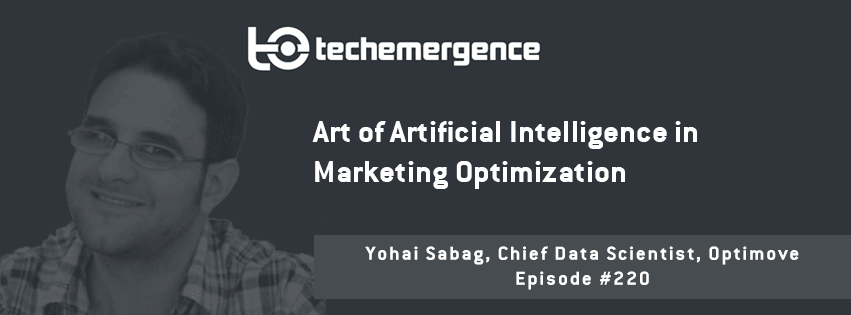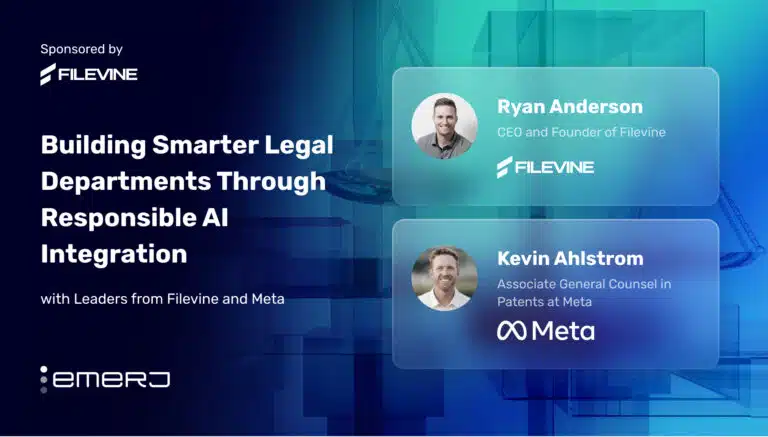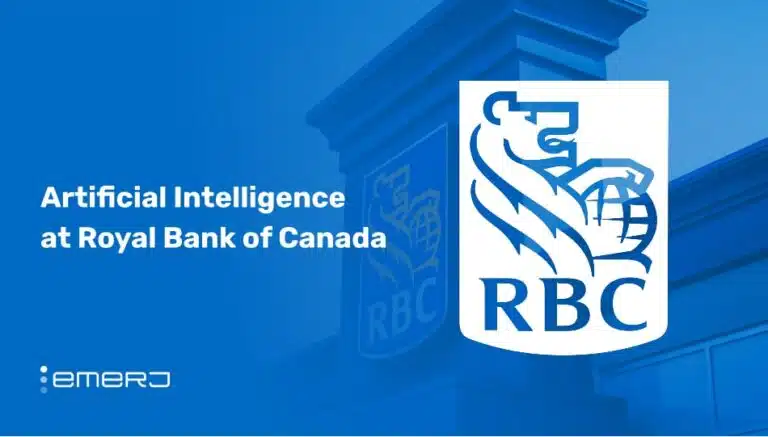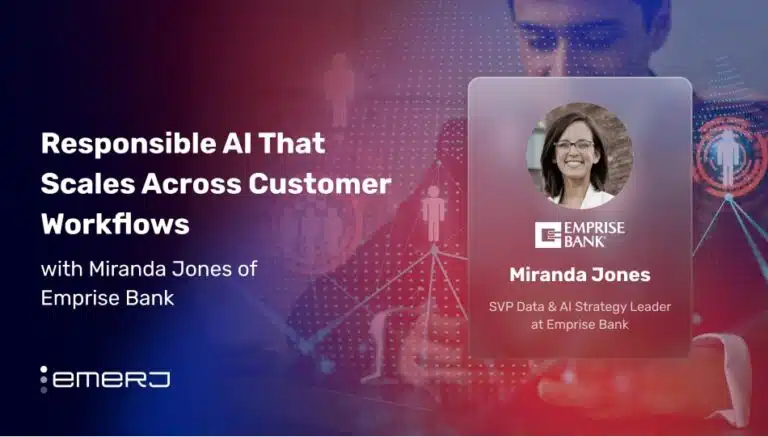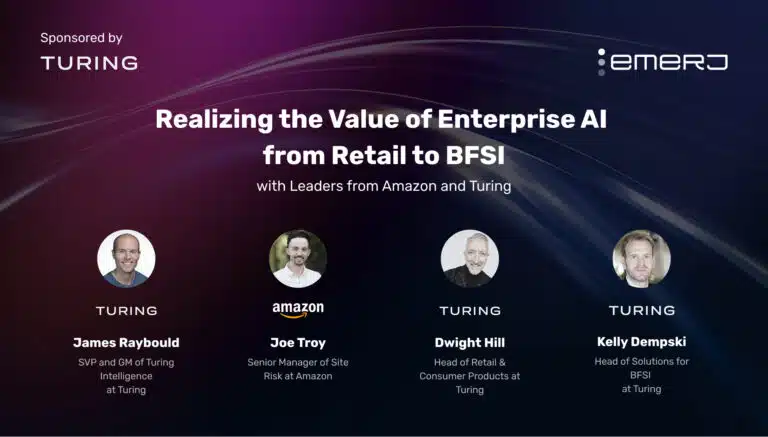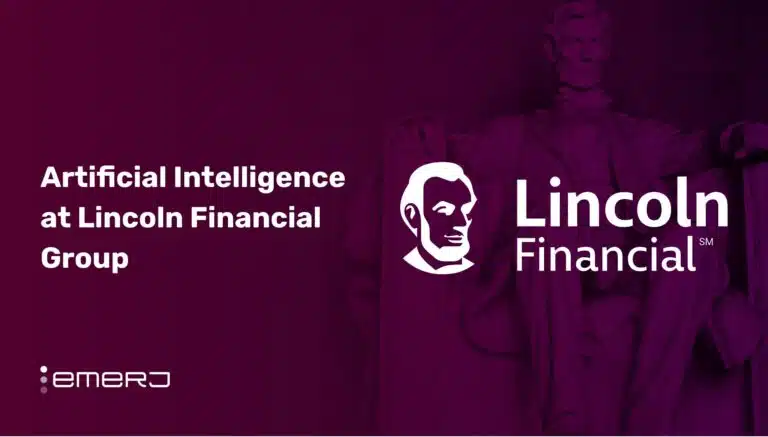Episode Summary: Getting beyond the marketing and jargon on the home pages of AI companies and figuring out what’s actually happening, what results are being driven in business, is part of our job at Emerj. Shaking those answers out of founders is not always easy, but we didn’t have to do much shaking with Yohai Sabag, chief data scientist for Optimove, a marketing AI and automation company in Israel. In this episode, he speaks about what humans are needed for in the optimization process, and what facets can be automated or distributed to a machine. Sabag gives an excellent walk-through of how marketers can use the “human-machine feedback loop” for artificial intelligence in marketing optimization at scale.
Expertise: Business intelligence and advanced data analytics
Brief Recognition: As the head of Optimove’s Data Lab, Yohai Sabag and his team work across departments at Optimove to optimize software for the company’s personalized marketing products. He earned both a BS in Industrial and Management Engineering and an MS in Information Technology from Ben Gurion University.
Current Affiliations: Chief Data Scientist at Optimove
Big Ideas:
 1 – Isolate Your Control Group. Period.
1 – Isolate Your Control Group. Period.
Companies shouldn’t overlook the scientific part of testing i.e. isolating a control group to measure various marketing methods and campaigns. It may require more time, but it’s the only way to compare and know what approaches have really worked, in the end saving wasted marketing dollars and bolstering potential for better ROI.
2 – Power of Artificial Intelligence is in Suggesting and Recommending.
The value in the AI-optimized marketing system, says Sabag, is in the machine’s ability to suggest and recommend combinations of elements for segmented marketing campaigns. The resulting feedback loop, in which marketers learn from the machine’s predictions and machines are fed more targeted material by marketers, is the heart of the collaborative optimization process. If you’re interested in getting other executive insights on the value of AI in marketing applications, our latest consensus on machine learning in marketing is a useful resource.
Interview Highlights:
The following is a condensed version of the full audio interview, which is available in the above links on Emerj’s SoundCloud and iTunes stations.
(2:50) How is the process of (calibration of marketing messages to a particular client) even possible with ML and AI?
Yohai Sabag: That is challenging; the solution is a marriage between art and science. That’s very important because the marketers should come up with creative and high-quality content, which we can communicate to customers…and the science should work for the marketers and find the best match between offers and customers…the scientific part can actually be divided into two stages: the first stage, we want to get to know our customer well; in the second stage, we want to be able to measure every interaction that we create with them, with every campaign we want to be able to measure the effect of it in a clean manner…
(8:42) A lot of businesses probably find it difficult to set aside and sequester a small group to treat one way, and then split up multiple campaigns and treat others in that cluster with variable methods of marketing…you probably see a lot of people not take the time to do that very granular work.
YH: Definitely, but I don’t accept from the marketers to find the best match for each of the customer personas, sometimes it is harder than that. We can work on a higher level, and the machine later on will do that matching job. Even if a marketer only has 20 groups of RFM (recency, frequency, monetary value), even then we see it many times—they don’t isolate a control group for each interaction that they create, and it’s sad actually, because there’s no way to conclude what was the real effect on what we did if you didn’t isolate an appropriate control group.
(11:46) The marketers do a lot of crafting of a lot of variable messages…and then the job of the AI is to match those right pieces with the right people…I take it you do your segmentation, build your marketing pieces, and then in some way the AI is rotating that across people—talk us through how the process works.
YS: When we’re combining the detailed customer persona that stands as a learning unit with the ability to measure every interaction, that’s exactly the infrastructure or an optimization process for a learning unit…we have our own bot, an Optibot, and what we get is a starting point that might contain dozens of consumer personas and subsections that might be available, then it makes an optimization process that eventually finds the best match between the very specific and homogenous customer personas and the action that marketers provide…
(15:21) It seems as though there’s a pace and a rhythm between man and machine there in terms of feeding the machine and then letting it run, letting it send out what it wants to send, calibrating that, feeding the machine more pieces—I hope I’m getting the right mental picture.
YS: Marketers are playing a vital role in that game, they definitely play a vital role, they feed the machine with creative, with content to communicate to the customers, with the interesting topics to start a conversation with our customers, and the machine finds a best fit between those interesting offerings and the customer personas.
(16:50) Is email marketing a good example to talk about here…is it a common channel for you?
YS: Email is a very common channel…the conclusions that the machine gets might be very inspirational, because if we see that with some segment we can’t find the best fit, the machine can recommend to the marketer and say, ‘hey, I need another action, the offers that you gave don’t fit, we can’t get a positive effect on that specific segment of customer, please provide some interesting context.” So sometimes the segments will give some inspiration for content…
(18:32) Is it (the ML-powered system) more of a suggestive intelligence at this point or is there some sort of autopilot?
YS: At this point, it works more on matching and takes the content and the offers that it has in the bank and tries to match between them and the customer persona, but it can definitely do other experiments; like, we can treat time as another variable in the equation and try to play with it, and try to check whether an email that goes out on Wednesday might go Monday and work better…it depends on how much freedom we give to the machine, we call it how much “ranks of freedom”, and according to that the machine will recommend to calibrate the offers or recommend to different spots.
(21:02) What do you—core applications if any—suspect will be much more common in five years?
YS: I think the machine will be more proactive, recommending more action for the marketers, such as— you neglected this segment of customer over here, let’s target them…I’d guess the principle of increasing personalization would be more significant; more data sources would be available and these machines would be able to suggest and aggregate for more sources, both structured and unstructured data, so we’ll increase the level of our knowledge base; and the machine responses to the customer behavior will be shorter…


